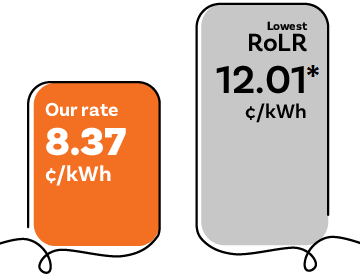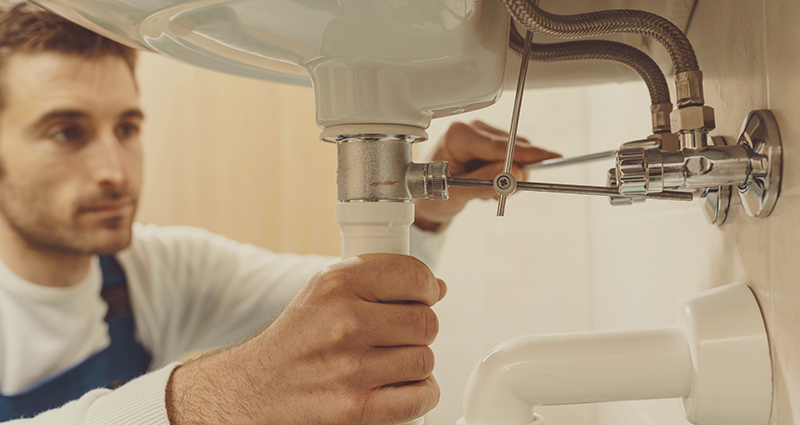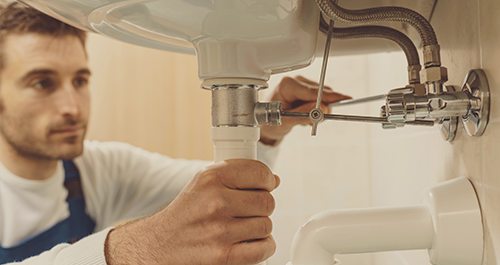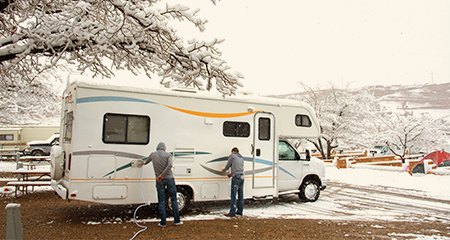Common causes and fixes for clogged drains
Accumulated gunk
Most bathroom drain clogs are caused by dirt, skin flakes, hair and soap scum build up in the drain pipes. Over time, all this gunk accumulates, slows water flow, or clogs the drain completely.
Fixing: Remove and clean the drain stopper. Next, block the overflow drain in the tub or sink and try using a drain plunger to loosen the clog. If that doesn’t work, remove the drain elbow joint and clean it out.
Preventing: To prevent bathroom drain clogs, use a hair strainer and drain cover to stop hair and debris from going down the drain. Make sure you clean that drain stopper regularly.
Clogged toilets
Clogged toilets are a nasty business. Toilet clogs are caused mainly by trying to flush non-flushable items, like feminine hygiene products, baby wipes, dental floss and cotton swabs. These things don’t dissolve or break apart in water.
Fixing: Your plunger is your first go-to to unclog a toilet. An effective plunger will send jets of water down the toilet to clear the drain pipe. If that doesn’t work, try a hand-powered drain auger. This is not a pleasant experience, but it can work! Drain augers can reach up to five feet down the drainpipe to break up or retrieve things (like a flushed toy) blocking it. Use it carefully, as it can scratch up the toilet bowl.
Preventing: Only put waste and toilet paper in the toilet. Even ‘flushable’ wipes are not usually flushable! Remember, regular cleaning can help that water flow smoothly.
Clogged kitchen sink drain
Kitchen sinks can clog when cooking grease or oil builds up on the drain pipe walls. Plus, dish soap scum and bits of food can make that build-up worse. Put it all together, and you’ve got a stubborn, gunky clog.
Fixing: You can tackle clogged kitchen sink drains like a bathroom sink drain but with a few extra steps. First, run hot water down the drain to soften the clog. Then, give it a dollop of dish soap and more hot water. Wait a few minutes and go at it with a drain plunger, followed by more hot water. If that doesn’t work, you might have to call a plumber depending on how deep the clog is.
Avoid using chemical drain cleaners when possible. While they can remove clogs, they also corrode and damage your plumbing. Excessive use can lead to costly problems!
Preventing: Never put cooking oil or grease down the drain. Instead, store it in a can or plastic bag and throw it in the garbage. Wipe down oily pots and pans, rinsing them in the sink. In addition, pick up a drain strain from a hardware store to catch bits of food debris from going down the drain.
Vent pipe clogs
Venting lets air into the pipe as water drains away. Without enough air, your drains can’t vent properly. Plus, venting prevents sewer gases from escaping and building up in your home!
To understand how it works, think of what happens when you put a straw into a glass of water. If you cover the open end of the straw with your finger, you prevent air from entering the straw. This creates a vacuum, and you can lift the straw out of the water—it won’t drain until you remove your finger!
Now think of your toilet, for example. It will swirl and empty quickly when flushed. But if the venting doesn’t let enough air in, you might hear the sink gurgle when you flush the toilet.
The drain pipe slope also contributes to the free flow of air venting. It determines how well water can carry waste to the sewer line. Too much slope and it runs too fast, leaving waste behind that can build up over time. If there is not enough slope, water can pool in the pipe, forming a blockage and clogging your venting.
Fixing: First, check that nothing is blocking the vent pipe opening on your roof, like a bird or squirrel’s nest. Then, check under sinks for gulp valves. They’re mounted at the end of a drain line and look like a plastic cap from a spray paint can. Fill the sink with water and let it drain. You should hear air getting sucked into that gulp valve. If not, it might need replacing. Contact a reputable plumber immediately if you smell raw sewage anywhere in your home.
For slope problems, you’ll need to call a professional plumber. They’ll use a plumber’s snake to unclog the pipe and flush it out for you. They can also install a new pipe set at a proper slope to carry your waste water out more effectively.
If you’re unsure, call a plumber.
While many clogged drains are often DIY fixes, they can get more complicated. If you feel unsure about making the fix yourself, rely on the help of a reputable plumber. Most plumbers offer drain cleaning and other preventative plumbing maintenance services. They can unclog your drains, inspect your plumbing system, and ensure it is in good working order.


















